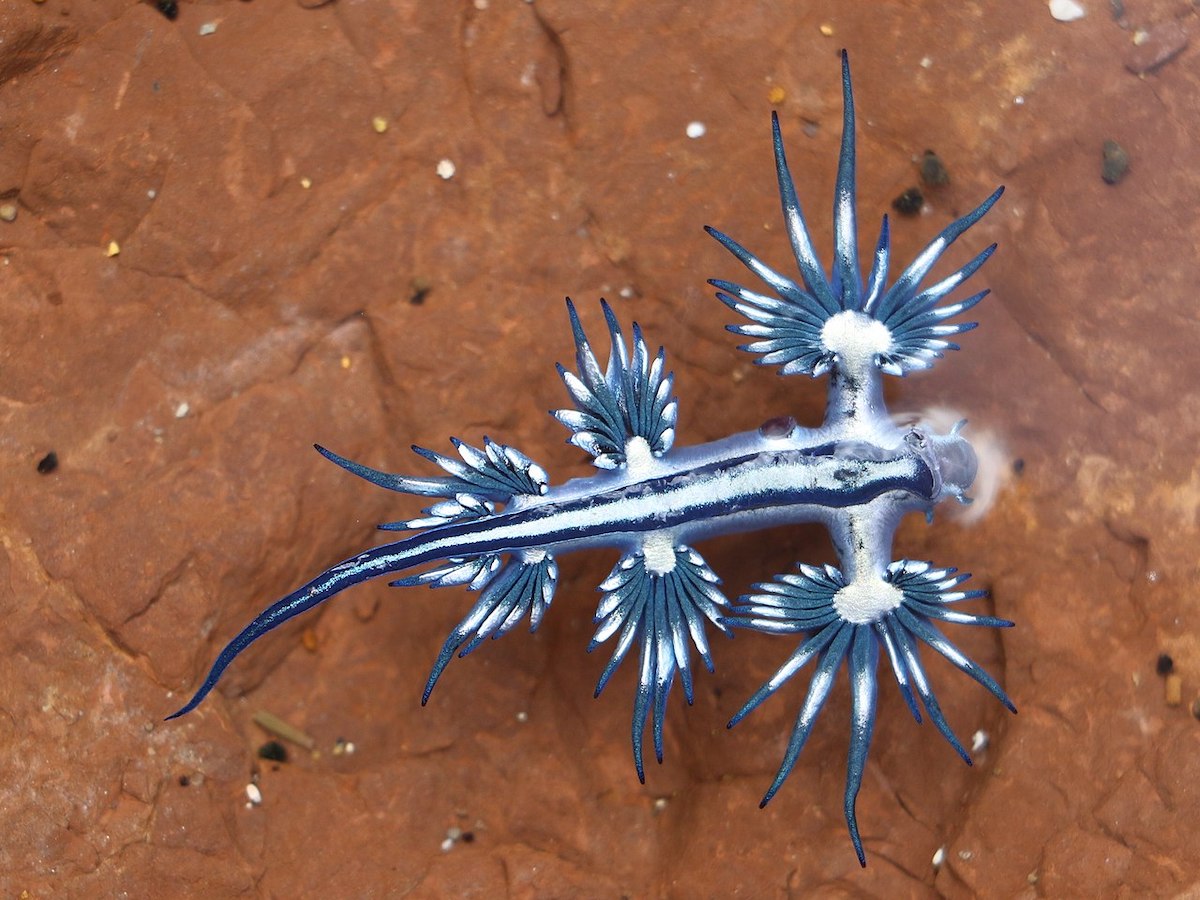Meet the Blue Dragon
See the venomous sea slugs that look like they crawled out of Final Fantasy

Earlier this month a man in Texas took a video of a curious creature he found on the beach. Not knowing what it was, he took a video and uploaded it to Reddit where it was immediately identified as a cute but venomous creature: Glaucus atlanticus.
This creature goes by many common names including sea swallow, blue ocean slug, blue angel and our personal favorite, blue dragon. They are found near the water’s surface and washed up on beaches around the world. A TikTok user recently found one in Australia where they’ve become increasingly common on beaches potentially due to warming waters and changing conditions. These Pokémon-like sea slugs are swiftly becoming media darlings, so let’s go behind the paparazzi’s lens and learn more about blue dragons.
How big does a blue dragon get?
While blue dragons are found in many places around the world, most people rarely grab glimpses of them due to their size. Dragons conjure up the image of huge menacing T-rex-sized beasts, but if you were an ancient knight sent off to fight this blue dragon, your sword wouldn’t need to be any larger than a toothpick. These slugs typically don’t grow larger than 3 centimeters, or about the size of a grape.
What do blue dragons eat?
Always one to feast in style, the blue dragon’s favorite food is a Portuguese Man O’War, another creature you don’t want to touch when you’re out in the ocean. They might be 300 times bigger and venomous, but they’re no match for a blue dragon’s appetite. Inside the stomach of a blue dragon is a tiny air bubble which helps it float through the water. This allows them to basically crawl on the undersurface of the water where the tentacles of the Man O’War float. It then attacks using jagged teeth like a serrated knife that helps them dismember the Man O’War and in a shocking turn of events, steal their venom. Once consumed, they store the stinging-cells that make a Man O’War such a literal pain in the tips of their tendril-like extremities. This video dives deeper into how this incredible feat is accomplished:
Are blue dragons dangerous to humans?
Since the blue dragon stores up the stinging-cells from Portuguese Man O’War, their sting can be several times worse than their siphonophore prey. Their venom can remain active even after they die, so you should take caution not to pick up or step on any you see on the beach. If you did get stung by one, it would likely result in welts and excruciating pain. So best not to give it a try and leave these little beauties along if you find them on a shoreline near you.
Why are they so pretty?
The bright blue color helps them camouflage into the splendorous hues of the ocean itself. The blue dragon spends a lot of time floating belly up, displaying its brightest baby blues to anyone on the surface where it is more likely to blend in with the brighter sunny shades above the waves. It’s drabber silver front faces down below disguising itself better with the darker tone found under the sea.

How do blue dragons mate?
You think online dating is hard? Try finding a mate when your body is full of siphonophore venom. Blue dragons are hermaphrodites which means they have both male and female parts. They mate with long S-shaped organs that help them get it on without touching each other’s stingy bits. This results in strings of dozens of eggs that they lay gently down on whatever is near them, sometimes even on the corpse of their last meal!
Are blue dragons endangered?
These creatures are so small that getting reliable estimates about their population is hard. It’s like looking for a splendid blue needle in a gigantic wet haystack. Therefore, it is hard to know if the number of blue dragons is growing or shrinking. What is known is the range in which you see blue dragons is changing. Researchers are finding them for the first time in new places like Taiwan or the Padres Island National Seashore in Texas. This is likely because of the impacts of climate change on ocean temperatures, storms, Portuguese Man O’War populations and more. Blue dragons are evidence that no animal is too small to feel the effects of our changing climate. You can help blue dragons and all the creatures that rely on the ocean by acting on climate before it’s too late.